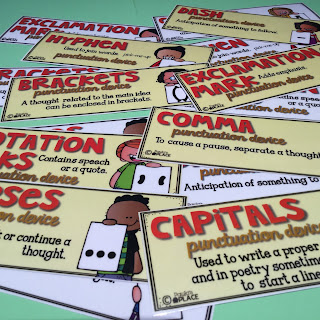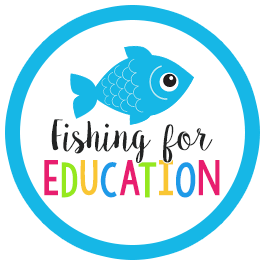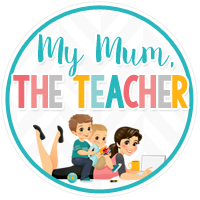It is nearing the end of the school year, which means we're all writing reports and already thinking about getting ready for next year. For those of us who are uncertain of the upcoming school year, it's about applying for a teaching position! Depending of where you're applying it may be easy or quite a daunting task. Here are some tips we have learnt along the way!
Please keep in mind that I'm writing from a WA Teacher's perspective and each state may vary in the process.
1. Start Applying Early
I started applying for positions end of Term 3, and I feel like I was a bit behind. From my understanding, in my area, schools start advertising for the next school year around Term 3. However, I've noticed there were much more job postings in Term 4. A lot of them for reference pools and not actual positions, but it is important to apply for these because it is what the school uses if a position opens up unexpectedly during the next year.
2. Have a CV/Resume Ready
Where I'm from in the states we call them resumes and when I moved to Australia I had to Google CV. There are three major differences between CVs and resumes: the length, the purpose and the layout. A resume is a
brief summary of your skills and experience over one or two pages, a CV is more detailed and can stretch well beyond two pages. (For more information about the differences,
click here.)
CV is commonly recommended and often times your department will have an example layout to base yours on. I suggest checking yours out to see what they're looking for, but it is your CV and you can cater it to fit you better. Check out some of the downloadable examples:
Western Australia,
Victoria,
Queensland,
New South Wales and
Wanneroo Education Network.
If I missed your state and you know of a helpful link, please comment below to let us know!
3. Write a Detailed Cover Letter
Notice the word "detailed," it is vital. I have been asking my colleagues about cover letters as I have had conflicting thoughts about it. For WA teachers, it is recommended for your CV to be 2 pages that is very detailed about you as a teacher. (I was wrong in thinking my 1 page rule to keep it short and sweet, so I had a friend send me her example and amped mine up.) Make sure you mention your accomplishments, experiences, beliefs and what skills will make you an asset to any school.
I personally like to address my cover letters to the person mentioned in the job advertisement and include the school's name and pool reference number.
4. Touch Based with Your Referees
When submitting your application it is common to find a section asking for 3 referrals. Be mindful in who you choose and make sure you let them know you're nominating them as your referral. I like to choose someone who is my authority (Principal, Deputy) or someone I work closely with (teacher on the same year level). Luckily, my partner in my year level is also my Phase Leader, which is considered an "authority" position above me.
My Phase Leader has received emails to complete a reference check form. I feel confident that she can fill it out with the best information about me because we work so closely together and she truly knows me as a teacher. This is why I say be mindful of who you choose. (But make sure to include your Principal(s).)
5. Read the School's Business Plan
Before completing your application it is important to read the school's business plan. It outlines the jobs of all staff, especially teachers and is detailed in what they're looking for. I would just send my short cover letter through with my application and wasn't even shortlisted. I have heard from other principals that the best tip is to make sure you cater to the business plan. If it doesn't, then your application will be looked over.
6. EMail & Call the Schools
After I apply for schools, I make sure I immediately email the principal, school email or person mentioned in the application. I only do this immediately because otherwise I would forget. However, I do think this is important because it gives you a chance to briefly speak with some of those looking at the applications and gets your name out there. It also shows initiative and can give you a "one up" on another applicant.
Calling schools is also highly recommended from a friend who was going through this process last year. She told me to not let the office give you the run around and at least speak to a deputy. I'm more timid on the phone, but I've tried a few.
7. Stop By in Person
Sometimes it's easier to remember someone when you put a face to a name. I had a colleague recommend that I take some time to stop by schools in person. They might give you the run around like with calling, but you may get a chance to simply introduce yourself and speak with someone briefly.
8. Be Positive
I know, trust me, I know how waiting around to hear something and getting rejected can be hard on you and make you more anxious than normal, but you must stay positive! It will eat you up and stress yourself out. Keep a positive outlook and send the good vibes out!
9. Prepare for Your Interview
If you're lucky to get an interview, then make sure you get prepared. Go back to that business plan and reasearch any unfamiliar ideas, programs and process. Check with colleagues, principals and friends who have gone through the interview process and ask them what kinds of questions they have had. Yes, you want to be natural, but you don't want to go in unprepared. Stay positive (again) so that you have an upbeat voice and the interviewer can have a pleasant feeling about considering you for the position.
10. Consider Teaching Regional
Not feeling lucky and no ties keeping you in the city? Consider teaching regional. When I moved to this regional area I was in the process of applying for my Partner Visa. However, I got relief work right away which led to me getting hired full-time throughout the year. Not many teachers go regional, so it is encouraged to do so for a couple years then head back to the city. You get a different kind of experience, and although I had taught for 5 years previously before more, I feel like I'm a stronger teacher now.
No feeling optimistic? Have a Back Up Plan!
If you don't get a teaching job for the next year, don't worry and have a back up plan. It may not be ideal, but to prepare for future applications and be considered for a job the next year you've got to have gained experience.
Relief Teaching
Easiest thing to do as a teacher is work as a relief teacher. This is what has gotten me almost all my teaching jobs in the past. It is a chance for you to show your face and have a variety of schools become familiar with you. I've talked with a few principals and they always say they would rather hire someone who is familiar with the school/hire within. Just make sure you're professional and available as much as possible. If you're eager to be at their school and have a good relationships with the principal, deputies and teachers, then someone will speak good on your behalf.
I know it isn't ideal, but relief teaching is such a great way to gain that experience needed for a full-time teaching job. The pay is also quite good, especially in WA, and you will have less stress if you've got something that comes up during the school year. I like my routine in life, but I don't mind the "not knowing where I'll be at tomorrow" worries of relief teaching. You get over it and don't have work to take home.
Teach Overseas
This isn't something I've personally experienced in the sense of teaching overseas. (Only because I am from the U.S. and I don't count my previous years as "overseas.") However, I had a friend who worked for an agency in the UK and did relief teaching for a year. She said they set you up in a place and the pay was good that she never had to worry. She always had work and had to turn down work a bit. She loved it because she was able to take a couple long weekends and travel while she lived there.
I have a friend who is leaving this year to like and teach in the UK and she's super excited to visit family and travel while working there for a year.
Tip from a Teacher:
Chantelle at Miss Jacob's Little Learners:
In VIC, we have Key Selction criteria that applicants need to answer. There are usually 5 questions on average, based around curriculum, teaching strategies, assessment, communication, team work and collaboration and maybe even an ICT or Inquiry based question (depending on the school).
Some Helpful Links:






























































